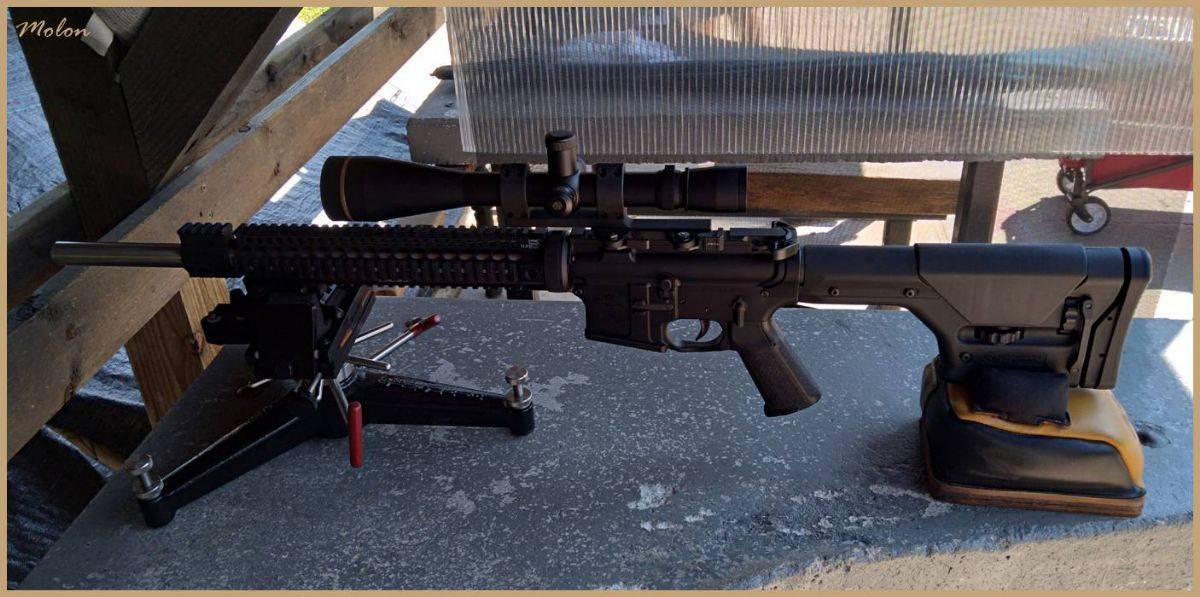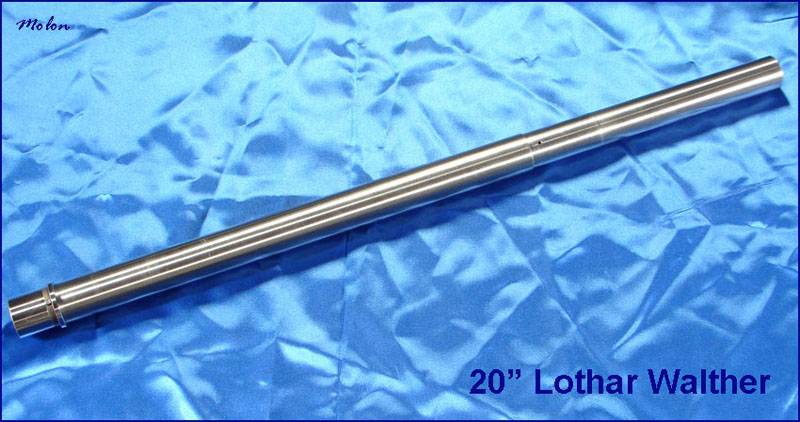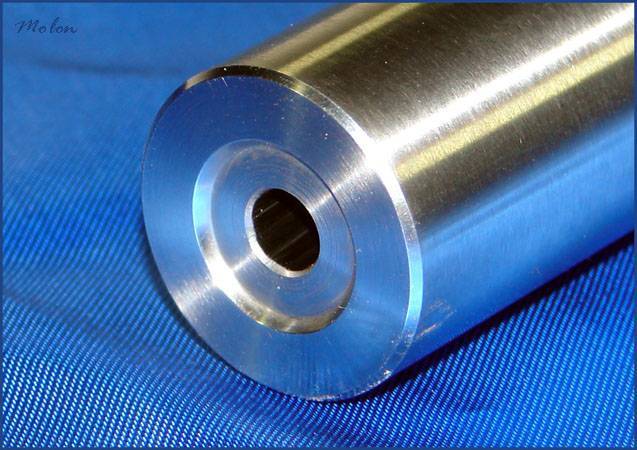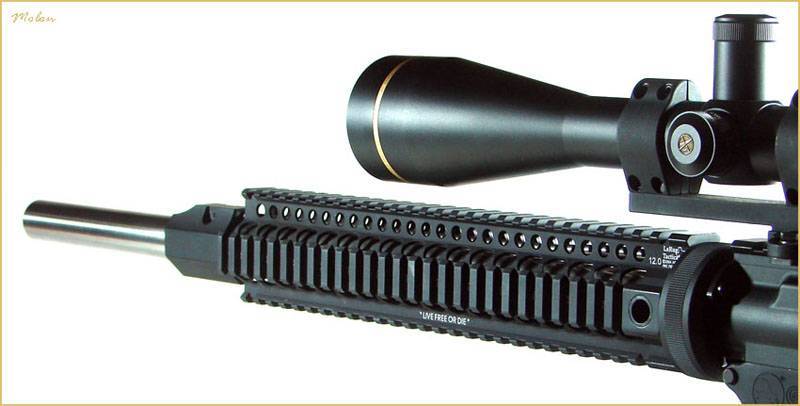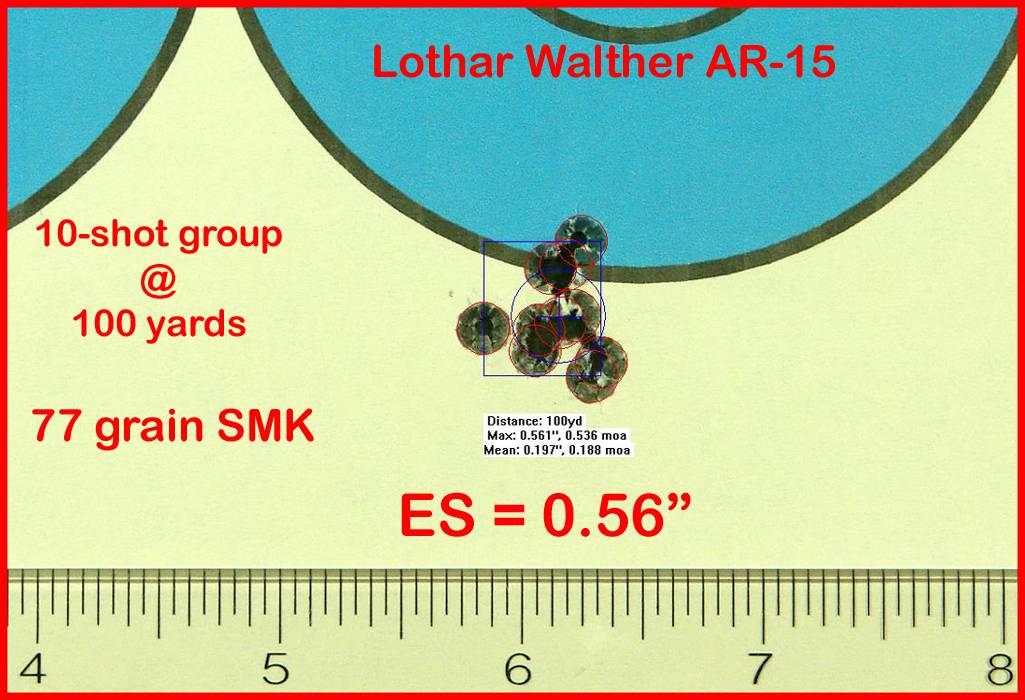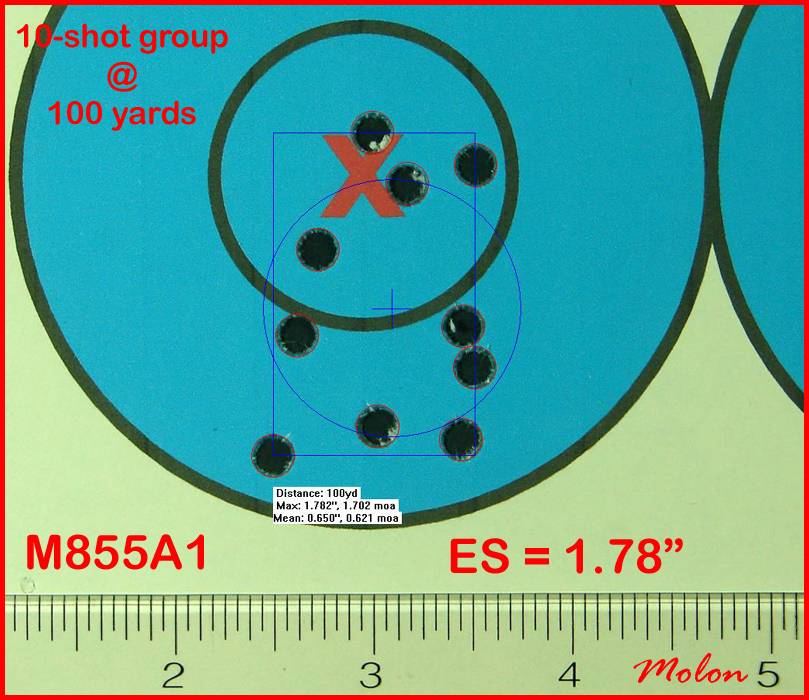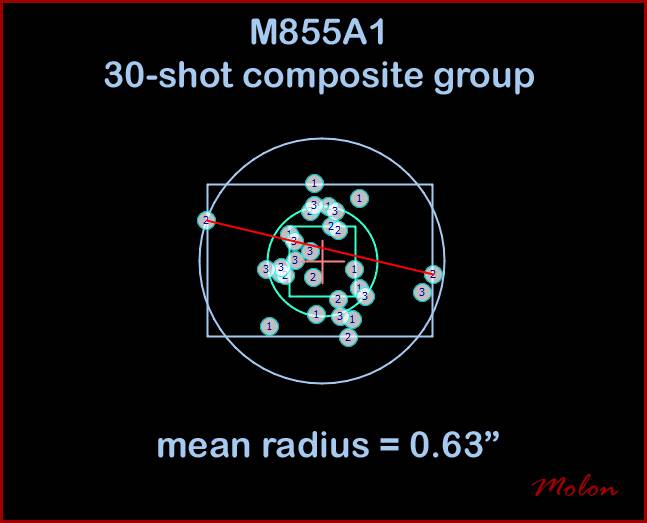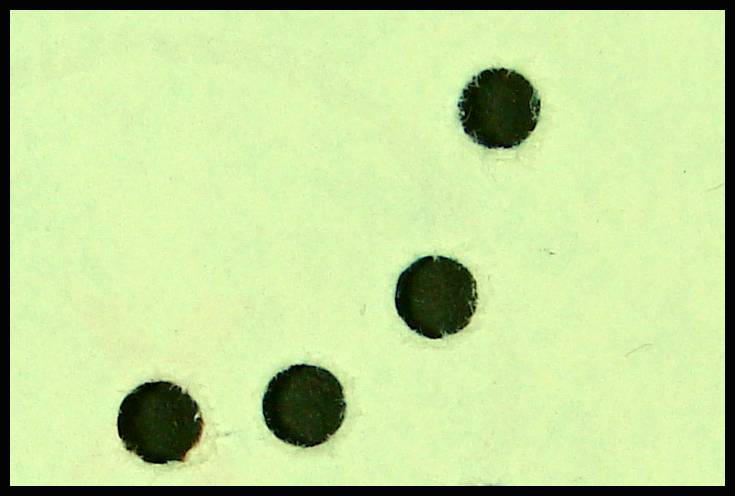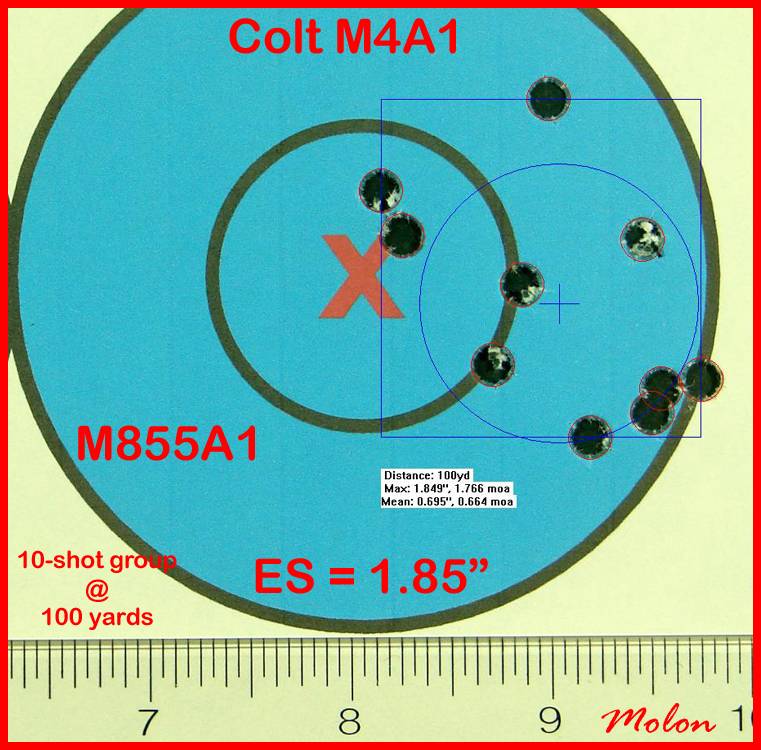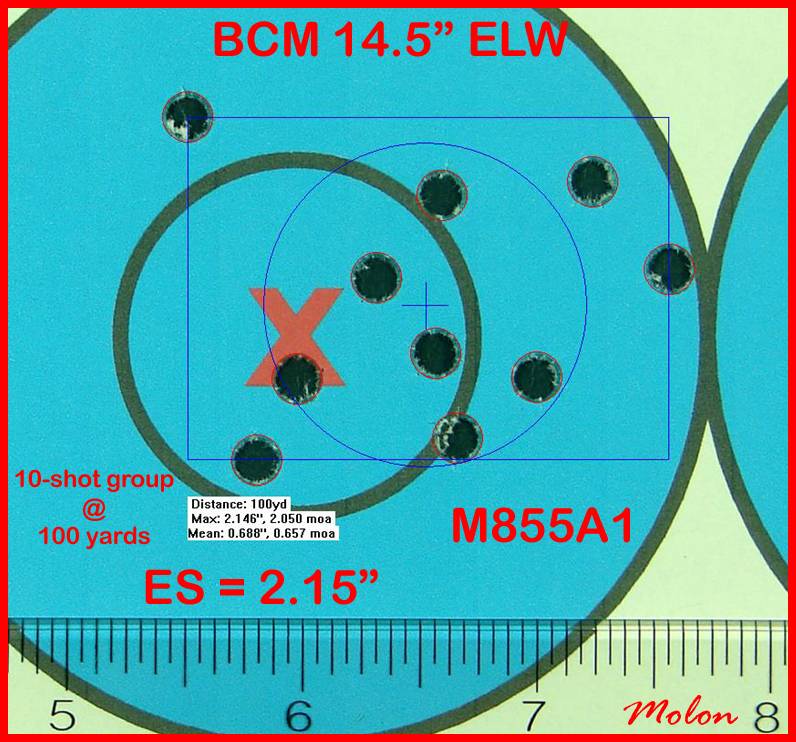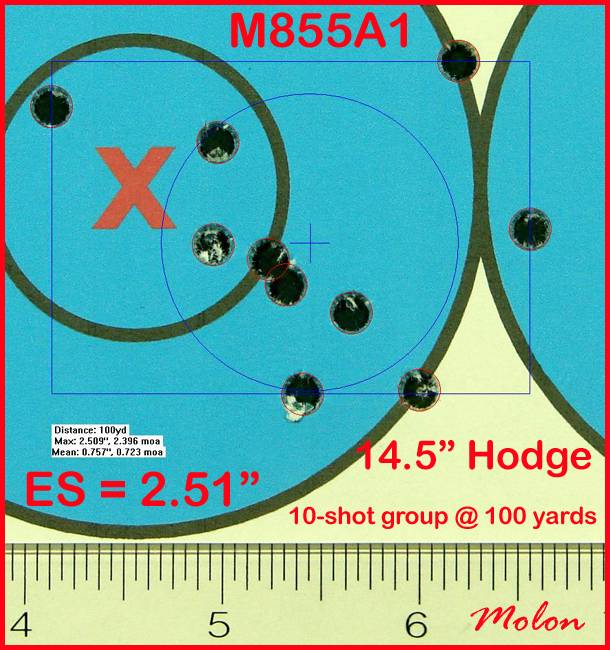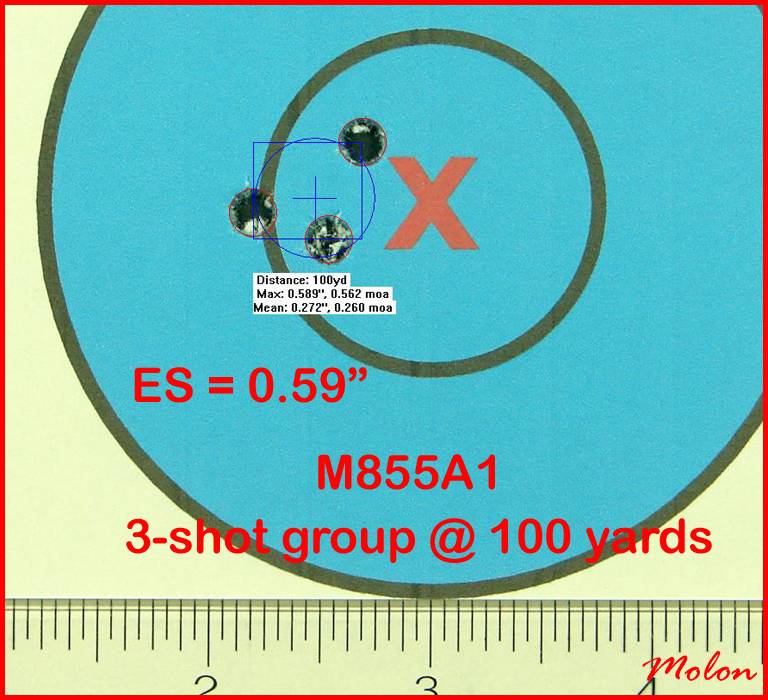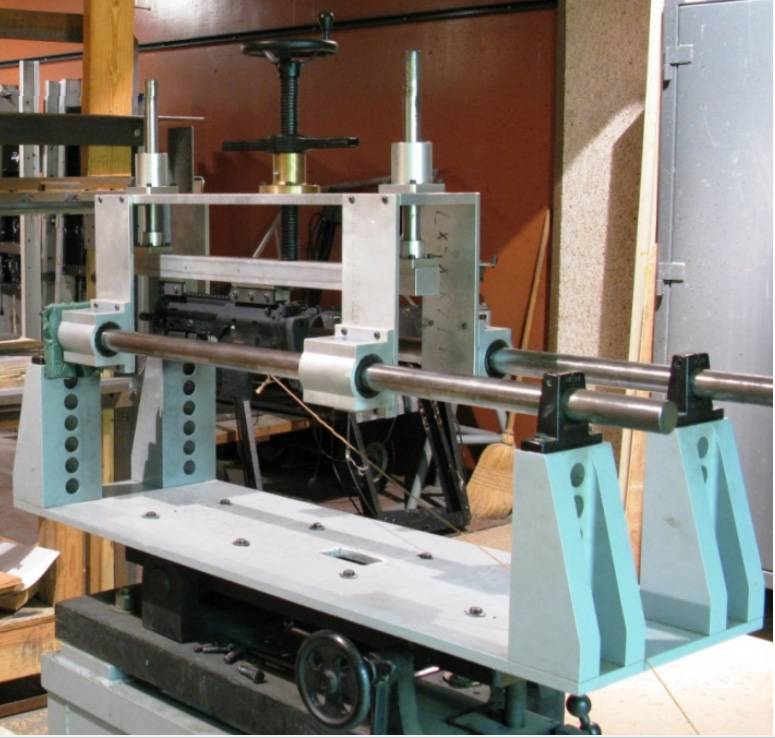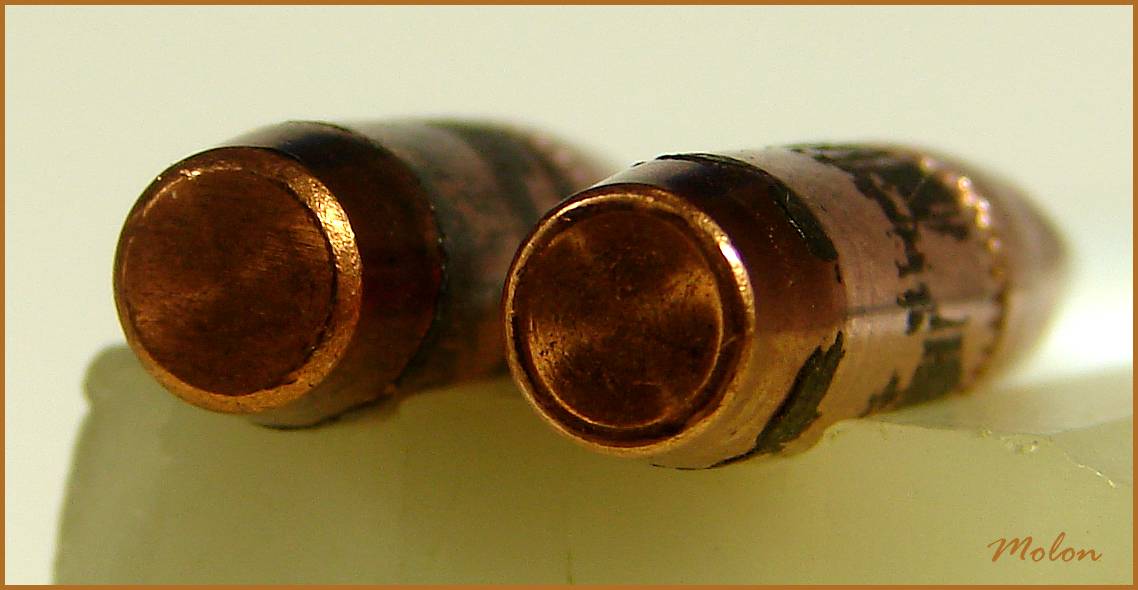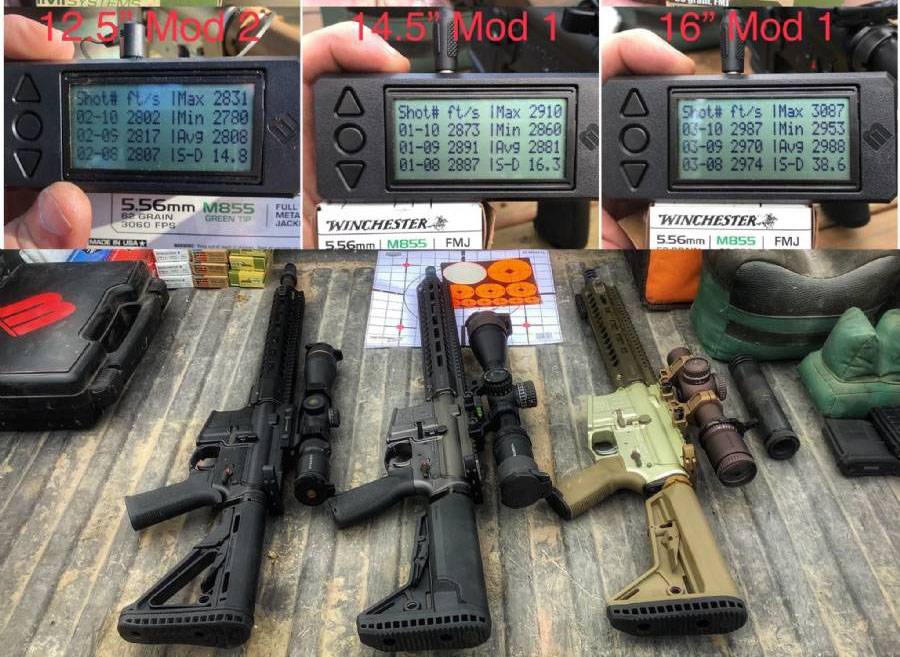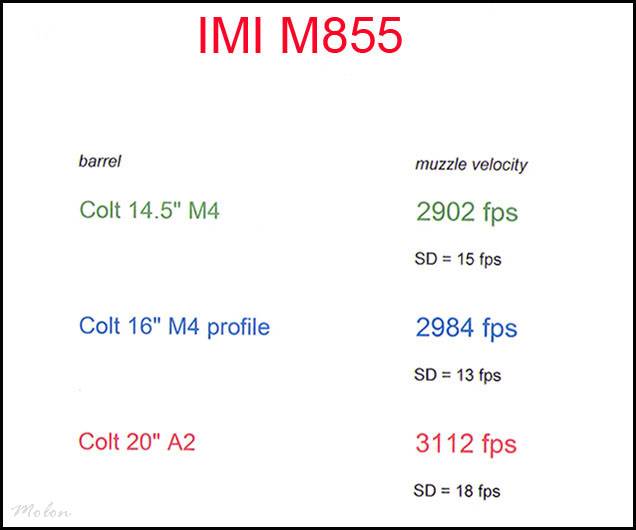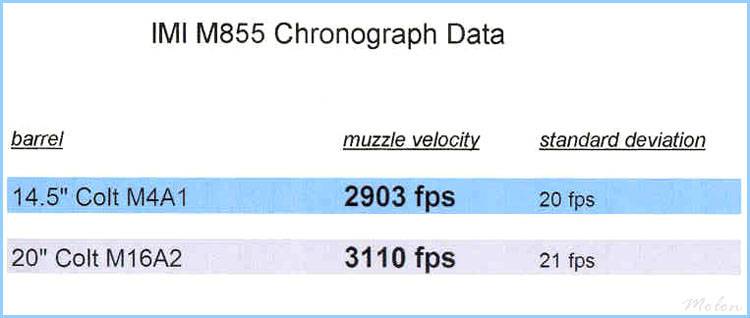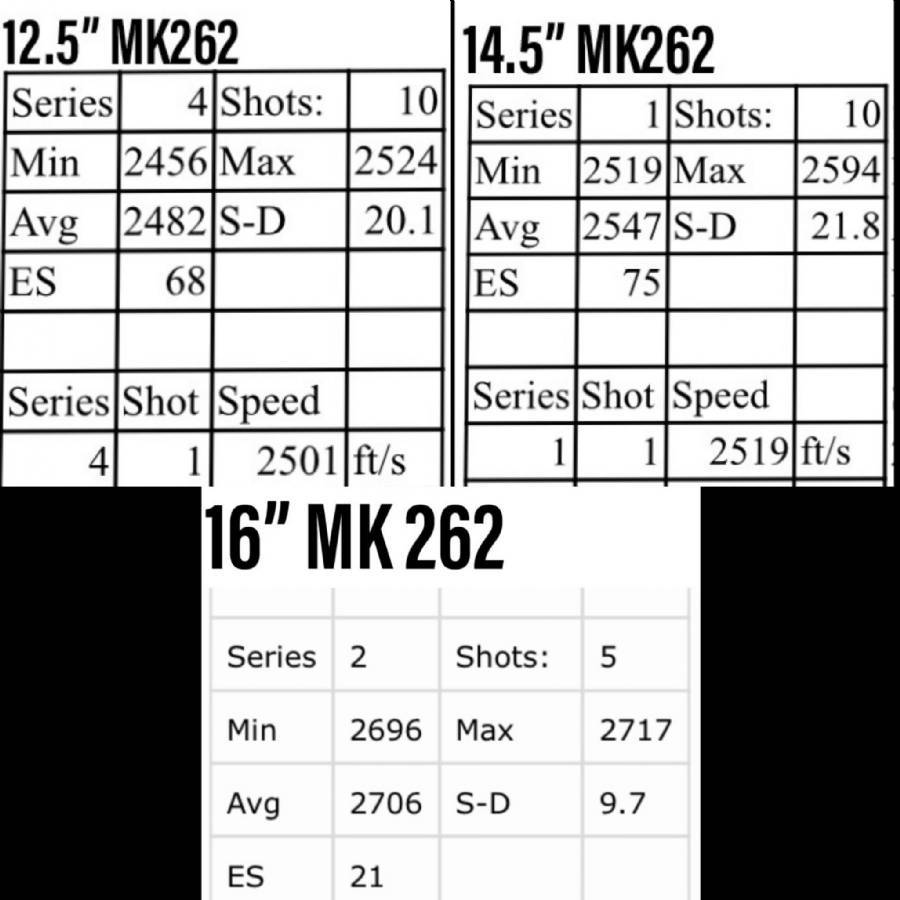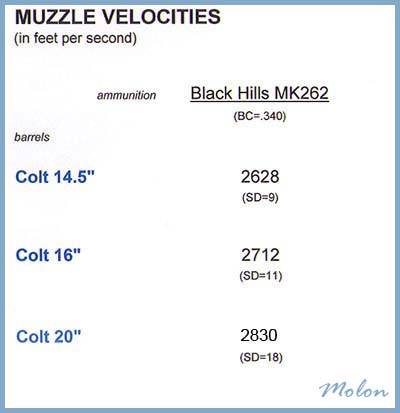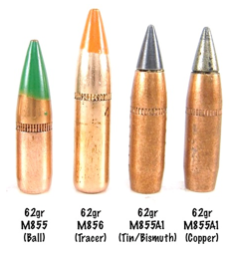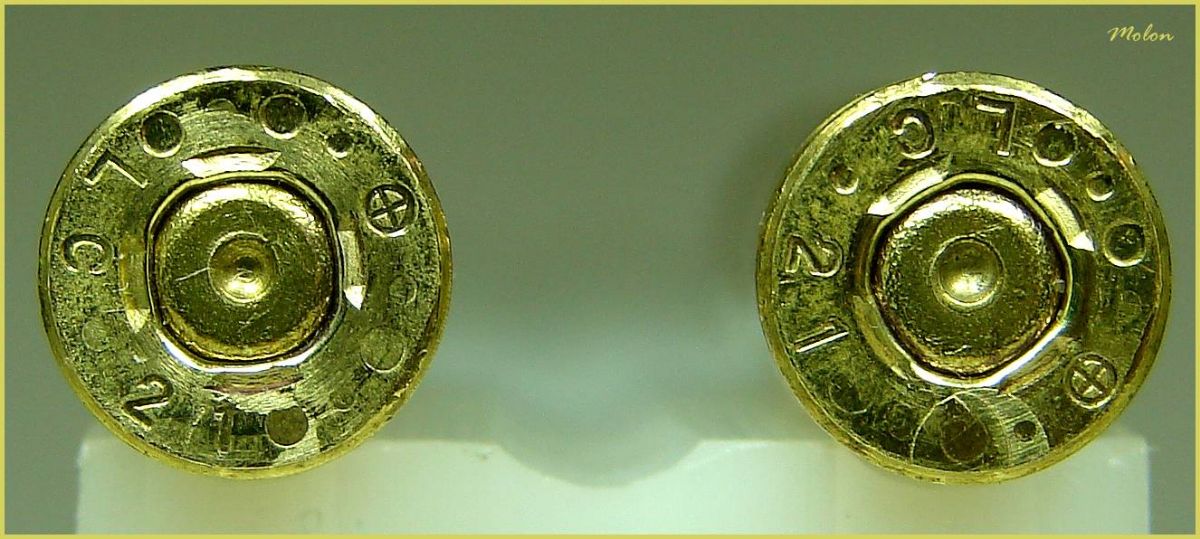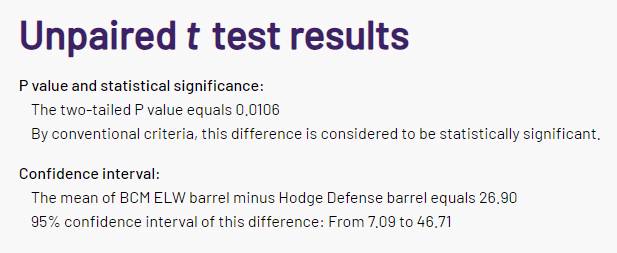M855A1 Accuracy and Velocity
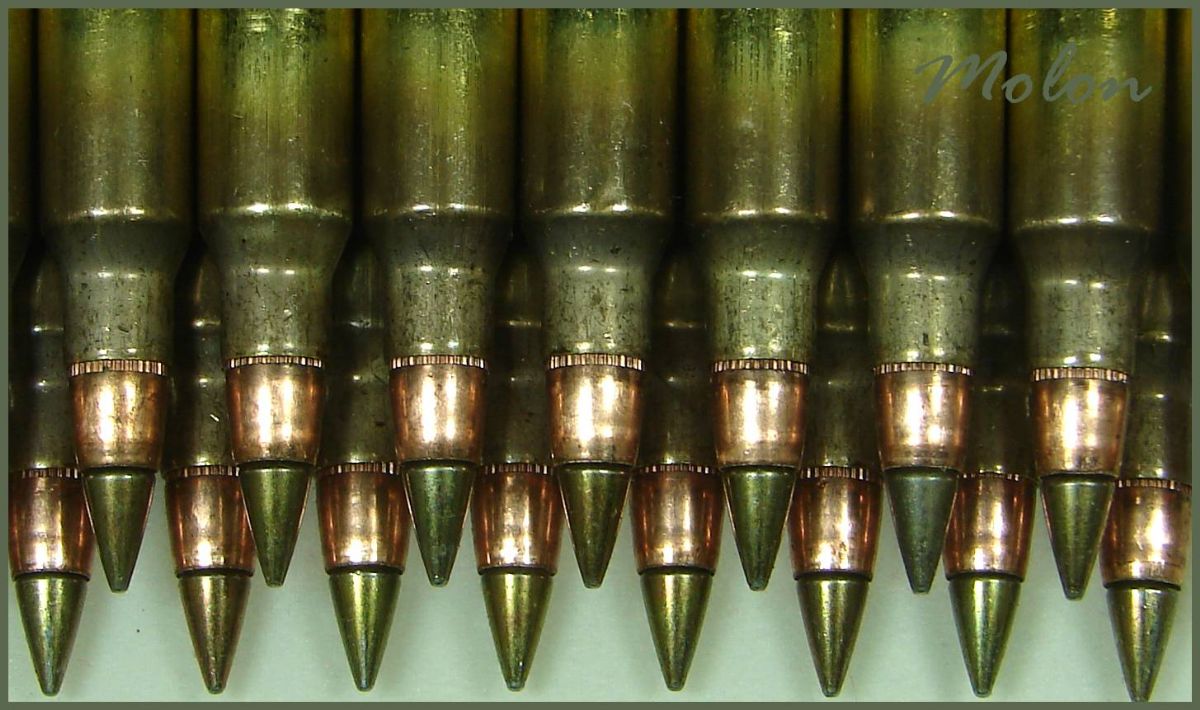
M855A1 ammunition is manufactured at the Lake City Army Ammunition Plant near Independence, Missouri. The lot of Lake City M855A1 ammunition that was evaluated for this article was manufactured in January of 2021. There were no malfunctions of any kind for this ammunition in any of the four barrels that were used in this evaluation.
M855A1 is packaged in kraft boxes with 30 rounds in each box. The rounds are on stripper clips with 10 rounds per clip.

The M855A1 cartridge has a nominal over-all length of 2.250”. This over-all length gives the A1 projectile a jump of 0.132” to the lands of a Colt 5.56mm NATO chamber.
M855A1 is loaded in Lake City brass. The brass cases have the annealing iris still visible. The headstamp for this lot reads:”LC 21” along with the NATO cross. The case-head stamp exhibits the octal station identifiers used on Lake City SCAMP machinery. The primer pocket has four “stab” crimps and a minimal amount of sealant. The case mouth has a generous amount of asphalt sealant and is crimped into a cannelure on the bullet.


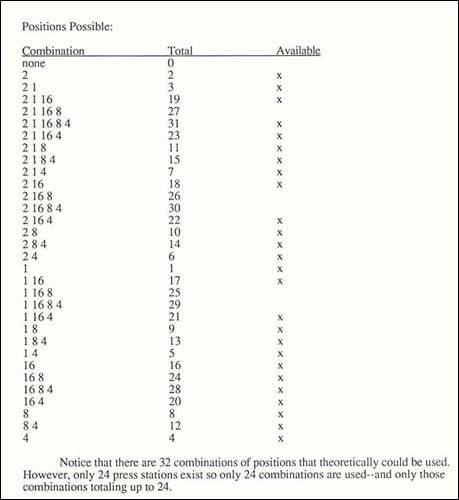
Lake City M855A1 ammunition is charged with the St. Marks Powder SMP-842, which is a flattened ball powder. Sampled powder charges had an average weight of 26.4 grains.
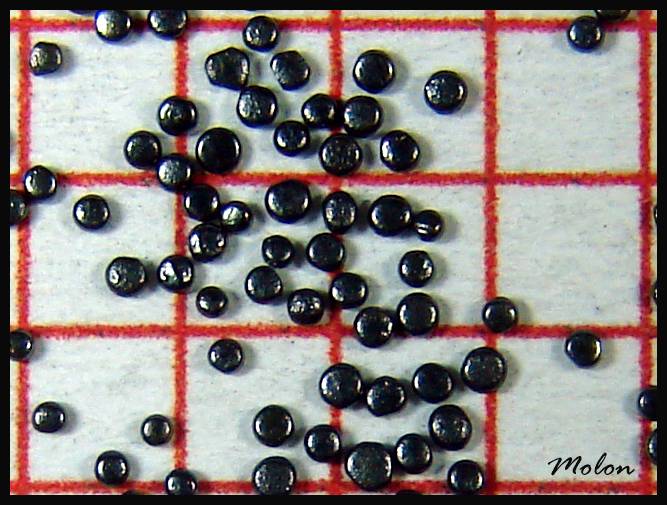
The M855A1 bullet is considered a 62 grain round, however, sampled bullets had an average weight of 62.6 grains. The M855A1 projectile is constructed from three different components; a solid copper core, an exposed steel penetrator and a reverse-drawn copper jacket that holds the other two components together. Since this bullet does not have a lead core, the only thing that fragments upon terminal impact is the copper jacket.
It has been reported that with early lots of M855A1, it was possible to “spin” the steel penetrator inside the copper jacket with your fingers. This was not the case with any of the current rounds that I sampled.
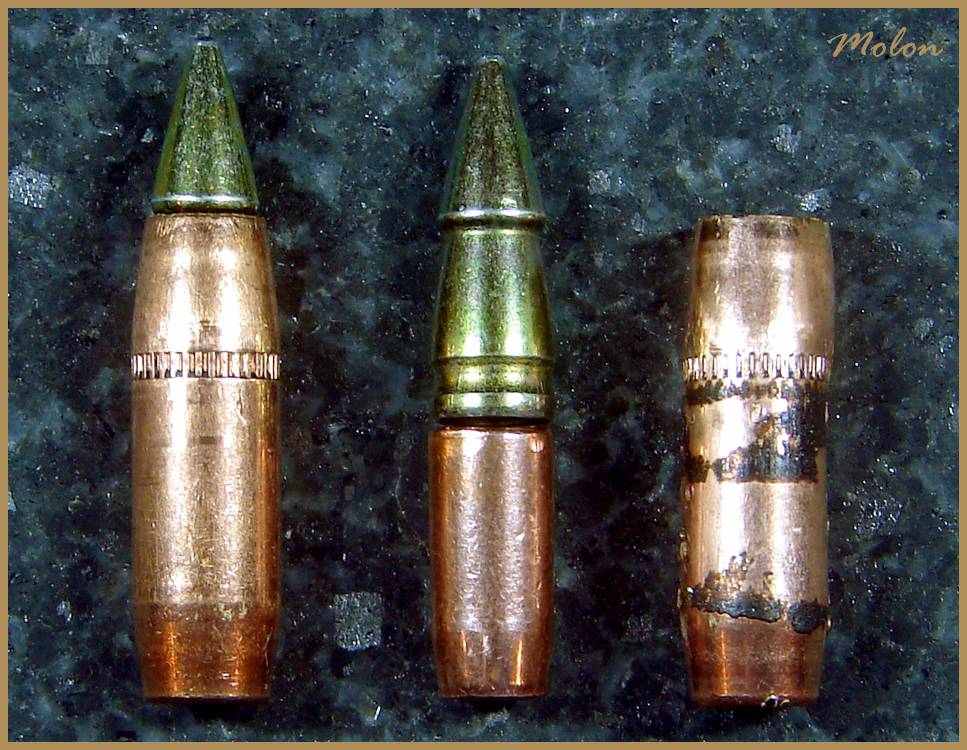
The M855A1 projectile has a lower specific gravity than conventional lead-core, copper jacketed bullets and is significantly longer than the legacy M855 projectile. The A1 projectile has a nominal length of 1.00”. According to Ballistic Performance of Rifle Bullets by Bryan Litz the G1 ballistic coefficient of M855A1 is 0.291. The same reference states that M855A1 has a nominal gyroscopic stability factor of 1.41 when fired from a barrel with a 1:8" twist and 1.85 when fired from a barrel with a 1:7" twist.

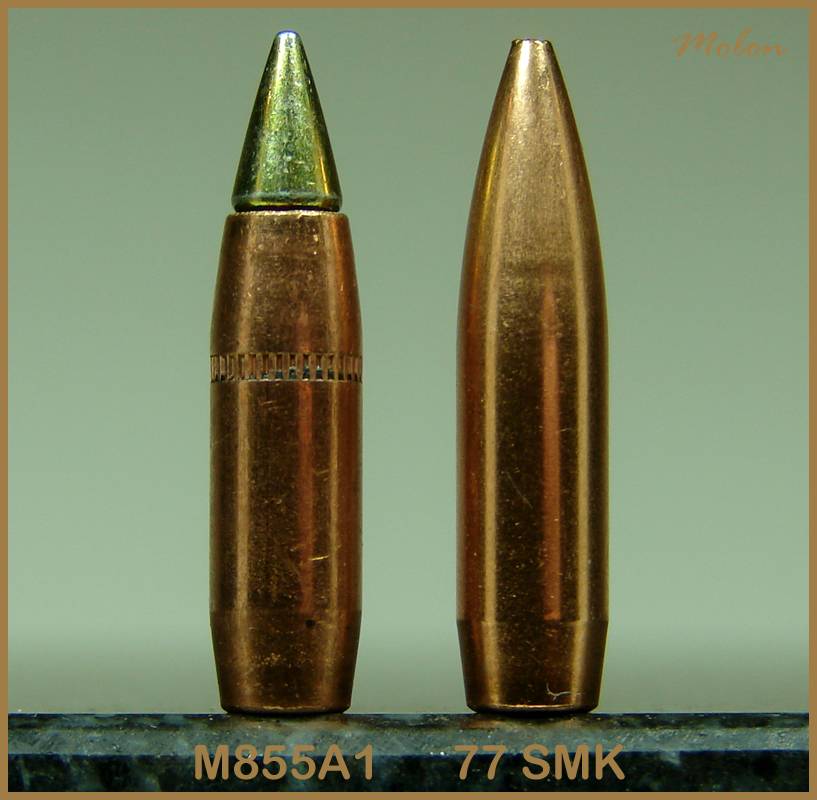

Velocity
I chronographed the Lake City M855A1 ammunition from a semi-automatic AR-15 with a chrome-lined, NATO chambered, 20” Colt A4 barrel with a 1:7” twist.

Chronographing was conducted using an Oehler 35-P chronograph with “proof screen” technology. The Oehler 35P chronograph is actually two chronographs in one package that takes two separate chronograph readings for each shot fired and then utilizes its onboard computer to analyze the data to determine if there is any statistically significant abnormality in the readings. If the readings are suspect, the chronograph “flags” the shot to let you know that the data is invalid. There was no invalid data flagged during this testing.
The velocities stated below are the muzzle velocities as calculated from the instrumental velocities using Oehler’s Ballistic Explorer software program. The strings of fire consisted of 10 rounds over the chronograph.
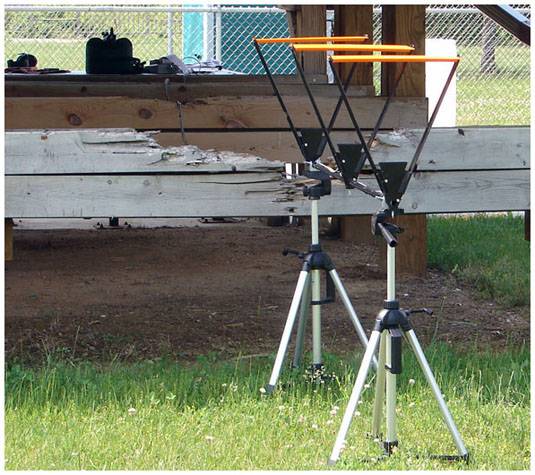
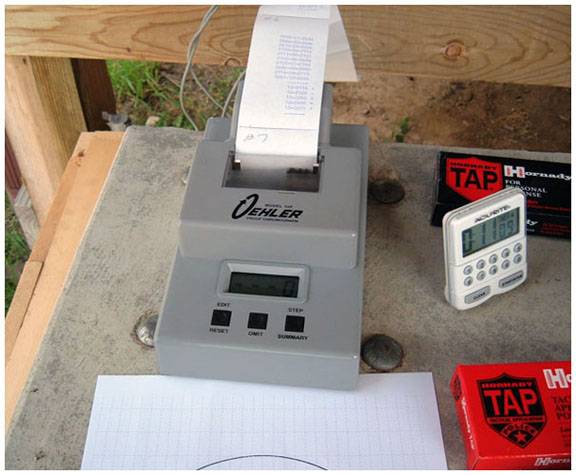
Each round was single-loaded and cycled into the chamber from a magazine fitted with a single-load follower. The bolt locked-back after each shot allowing the chamber to cool in between each shot. This technique was used to mitigate the possible influence of “chamber-soak” on velocity data. Each new shot was fired in a consistent manner after hitting the bolt release. Atmospheric conditions were monitored and recorded using a Kestrel 4000 Pocket Weather Tracker.

Atmospheric conditions
Temperature: 76 degrees F
Humidity: 47%
Barometric pressure: 30.09 inches of Hg
Elevation: 950 feet above sea level
The muzzle velocity for the 10-shot string of the Lake City M855A1 ammunition fired from the 20” Colt barrel was 3131 FPS with a standard deviation of 18 FPS and a coefficient of variation of 0.59%.
For those of you who might not be familiar with the coefficient of variation (CV), it is the standard deviation, divided by the mean (average) muzzle velocity and then multiplied by 100 and expressed as a percentage. It allows for the comparison of the uniformity of velocity between loads in different velocity spectrums; e.g. 77 grain loads running around 2,650 fps compared to 55 grain loads running around 3,250 fps.
For comparison, the mil-spec for M193 allows for a coefficient of variation of approximately 1.2%, while one of my best 77 grain OTM hand-loads, with a muzzle velocity of 2639 PFS and a standard deviation of 4 FPS, has a coefficient of variation of 0.15%.

I also chronographed the Lake City M855A1 ammunition from three different 14.5” barrels in the same manner as described above for the 20” Colt barrel. Chronographing of the 14.5” barrels was conducted immediately after the chronographing for the 20” barrel.
A 10-shot string of the Lake City M855A1 fired from a 14.5” Hodge Defense barrel had a muzzle velocity of 2939 FPS with a standard deviation of 23 FPS.

A 10-shot string of the M855A1 fired from a 14.5” Colt M4A1 SOCOM barrel had a muzzle velocity of 2949 FPS with a standard deviation of 17 FPS.

A 10-shot string of the M855A1 fired from a 14.5” Bravo Company ELW barrel had a muzzle velocity of 2966 FPS with a standard deviation of 19 FPS.

The muzzle velocities for the Lake City M855A1 are summarized in the table below.

For comparison, the next two tables show the muzzle velocities for legacy military 5.56mm ammunition that also uses 62 grain projectiles: M855 and MK318 Mod 0.

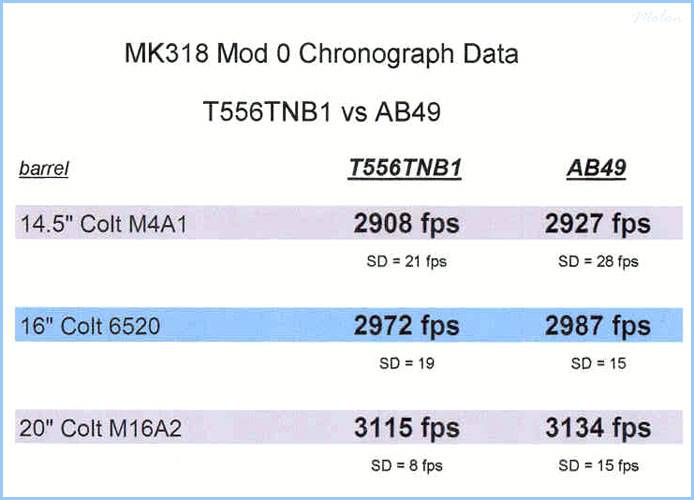
continued . . .

M855A1 ammunition is manufactured at the Lake City Army Ammunition Plant near Independence, Missouri. The lot of Lake City M855A1 ammunition that was evaluated for this article was manufactured in January of 2021. There were no malfunctions of any kind for this ammunition in any of the four barrels that were used in this evaluation.
M855A1 is packaged in kraft boxes with 30 rounds in each box. The rounds are on stripper clips with 10 rounds per clip.

The M855A1 cartridge has a nominal over-all length of 2.250”. This over-all length gives the A1 projectile a jump of 0.132” to the lands of a Colt 5.56mm NATO chamber.
M855A1 is loaded in Lake City brass. The brass cases have the annealing iris still visible. The headstamp for this lot reads:”LC 21” along with the NATO cross. The case-head stamp exhibits the octal station identifiers used on Lake City SCAMP machinery. The primer pocket has four “stab” crimps and a minimal amount of sealant. The case mouth has a generous amount of asphalt sealant and is crimped into a cannelure on the bullet.



Lake City M855A1 ammunition is charged with the St. Marks Powder SMP-842, which is a flattened ball powder. Sampled powder charges had an average weight of 26.4 grains.

The M855A1 bullet is considered a 62 grain round, however, sampled bullets had an average weight of 62.6 grains. The M855A1 projectile is constructed from three different components; a solid copper core, an exposed steel penetrator and a reverse-drawn copper jacket that holds the other two components together. Since this bullet does not have a lead core, the only thing that fragments upon terminal impact is the copper jacket.
It has been reported that with early lots of M855A1, it was possible to “spin” the steel penetrator inside the copper jacket with your fingers. This was not the case with any of the current rounds that I sampled.

The M855A1 projectile has a lower specific gravity than conventional lead-core, copper jacketed bullets and is significantly longer than the legacy M855 projectile. The A1 projectile has a nominal length of 1.00”. According to Ballistic Performance of Rifle Bullets by Bryan Litz the G1 ballistic coefficient of M855A1 is 0.291. The same reference states that M855A1 has a nominal gyroscopic stability factor of 1.41 when fired from a barrel with a 1:8" twist and 1.85 when fired from a barrel with a 1:7" twist.



Velocity
I chronographed the Lake City M855A1 ammunition from a semi-automatic AR-15 with a chrome-lined, NATO chambered, 20” Colt A4 barrel with a 1:7” twist.

Chronographing was conducted using an Oehler 35-P chronograph with “proof screen” technology. The Oehler 35P chronograph is actually two chronographs in one package that takes two separate chronograph readings for each shot fired and then utilizes its onboard computer to analyze the data to determine if there is any statistically significant abnormality in the readings. If the readings are suspect, the chronograph “flags” the shot to let you know that the data is invalid. There was no invalid data flagged during this testing.
The velocities stated below are the muzzle velocities as calculated from the instrumental velocities using Oehler’s Ballistic Explorer software program. The strings of fire consisted of 10 rounds over the chronograph.


Each round was single-loaded and cycled into the chamber from a magazine fitted with a single-load follower. The bolt locked-back after each shot allowing the chamber to cool in between each shot. This technique was used to mitigate the possible influence of “chamber-soak” on velocity data. Each new shot was fired in a consistent manner after hitting the bolt release. Atmospheric conditions were monitored and recorded using a Kestrel 4000 Pocket Weather Tracker.

Atmospheric conditions
Temperature: 76 degrees F
Humidity: 47%
Barometric pressure: 30.09 inches of Hg
Elevation: 950 feet above sea level
The muzzle velocity for the 10-shot string of the Lake City M855A1 ammunition fired from the 20” Colt barrel was 3131 FPS with a standard deviation of 18 FPS and a coefficient of variation of 0.59%.
For those of you who might not be familiar with the coefficient of variation (CV), it is the standard deviation, divided by the mean (average) muzzle velocity and then multiplied by 100 and expressed as a percentage. It allows for the comparison of the uniformity of velocity between loads in different velocity spectrums; e.g. 77 grain loads running around 2,650 fps compared to 55 grain loads running around 3,250 fps.
For comparison, the mil-spec for M193 allows for a coefficient of variation of approximately 1.2%, while one of my best 77 grain OTM hand-loads, with a muzzle velocity of 2639 PFS and a standard deviation of 4 FPS, has a coefficient of variation of 0.15%.

I also chronographed the Lake City M855A1 ammunition from three different 14.5” barrels in the same manner as described above for the 20” Colt barrel. Chronographing of the 14.5” barrels was conducted immediately after the chronographing for the 20” barrel.
A 10-shot string of the Lake City M855A1 fired from a 14.5” Hodge Defense barrel had a muzzle velocity of 2939 FPS with a standard deviation of 23 FPS.

A 10-shot string of the M855A1 fired from a 14.5” Colt M4A1 SOCOM barrel had a muzzle velocity of 2949 FPS with a standard deviation of 17 FPS.

A 10-shot string of the M855A1 fired from a 14.5” Bravo Company ELW barrel had a muzzle velocity of 2966 FPS with a standard deviation of 19 FPS.

The muzzle velocities for the Lake City M855A1 are summarized in the table below.

For comparison, the next two tables show the muzzle velocities for legacy military 5.56mm ammunition that also uses 62 grain projectiles: M855 and MK318 Mod 0.


continued . . .
Last edited:

